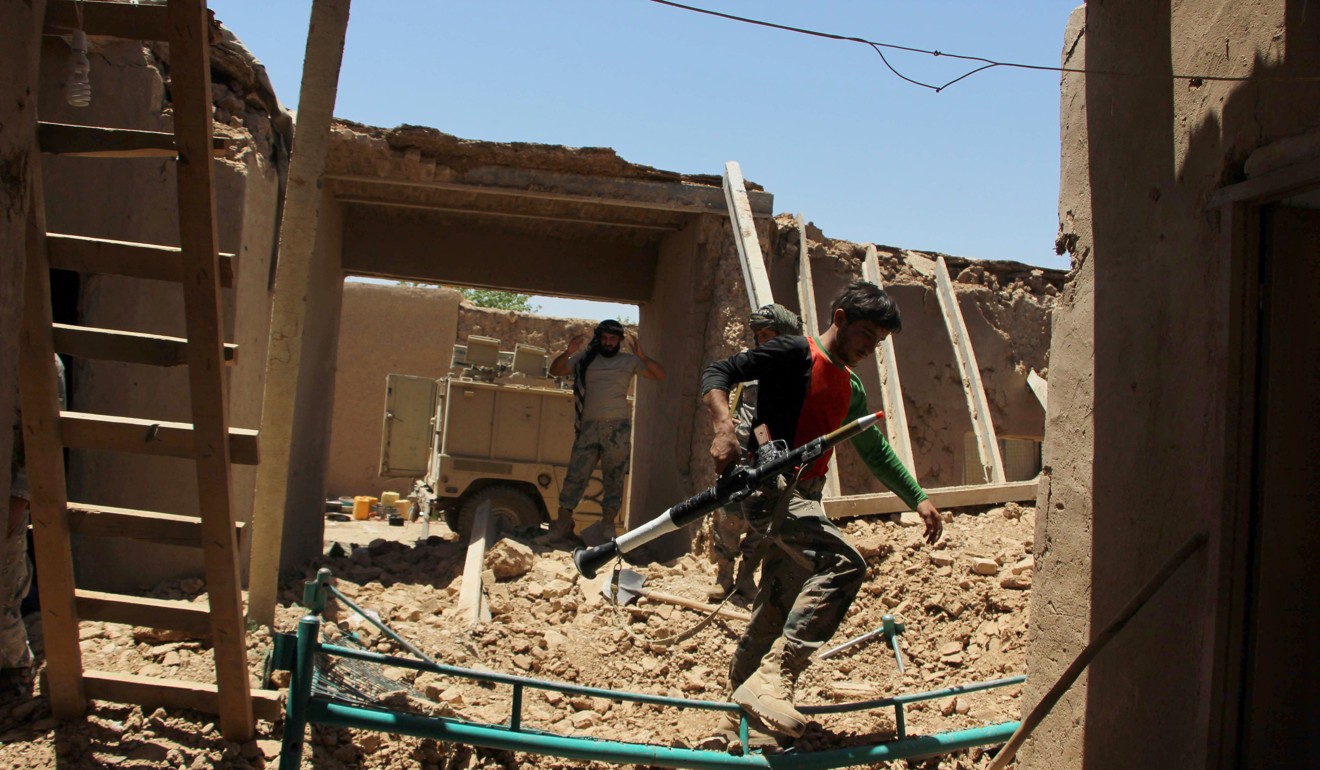
Nato-led forces have killed more civilians in Afghanistan than Taliban so far in 2019
- For years, Kabul and its allies were able to point at the UN statistics, which had shown that insurgents were the biggest killers of Afghan civilians
The Afghan government and its international backers killed more civilians in the first three months of 2019 than the Taliban and other insurgent groups, the United Nations said.

The casualty figures make particularly damning reading for the Nato-led mission, which was responsible for 146 deaths, or a quarter of the total. Most were caused by air strikes.
Afghan government forces caused a fifth of all deaths, mostly in search operations, the United Nations found.
For years, despite civilian deaths and injuries caused by both sides, the government in Kabul and its allies had been able to point to the UN statistics, which showed that insurgents were the biggest killer of Afghan civilians.
At least for the start of this year, that was no longer the case. Washington’s Afghanistan peace envoy Zalmay Khalilzad tweeted that he was “distressed by reports of civilian casualties” but did not directly address the UN figures.
Khalilzad, who has been tasked with brokering a deal with the Taliban, said the only way to stop the blood flow was a ceasefire.
“We deeply regret any loss of innocent life during military operations. We never target innocents … While we strive to prevent casualties, real solution is a ceasefire or reduced violence as we pursue lasting peace.”
Ashraf Ghani’s government blamed insurgents, accusing them of causing the deaths by using human shields.
“The real reason behind the number of civilian casualties is armed militants who use civilians as their shield and use their homes as their battleground,” the presidential information coordination centre said on Twitter, and added a link to a statement from the national security council.
The defence and interior ministries and the national intelligence service did not accept the UN’s methodology, the statement said. It also said activist Shaharzad Akbar had been appointed to work on peace, civilian protection and support for national security forces.
Overall 581 civilians were killed and 1,192 injured in Afghanistan between January and March, down nearly a quarter from a year earlier, and at the lowest level since 2013. That fall was largely driven by a reduction in suicide attacks, the UN said.
New attacks as spring offensive begins in Afghanistan
An unusually harsh winter may have contributed to the reduction, by making suicide attacks more logistically challenging, the UN said. It was unclear whether ongoing peace talks, or any initiatives to reduce harm to civilians, had an impact.
Pro-government forces caused 305 civilian deaths, and opposition fighters 227 deaths. Another 49 deaths were caused by crossfire or could not be attributed.
The casualty tolls from pro-government air strikes and search raids were the highest for any quarter since the UN began keeping records, the report said.

Most of the search operations that caused casualties were carried out either by intelligence services’ special forces unit, or the paramilitary Khost Protection force, both supported by international troops.
“Unama (the UN mission in Afghanistan) reiterates its concern that these forces appear to act with impunity, outside of the governmental chain of command,” the report said, calling for the Khost unit to be either disbanded or incorporated into the armed forces.
The report also detailed attacks on education and health care sites that may add to concerns about what a peace deal with the Taliban could mean for the country, particularly women’s rights.
The UN recorded 18 instances in which schools were targeted, the majority by Taliban or other insurgents. Among the most serious were attacks on girls’ schools in northern Farah province, setting buildings and equipment on fire.
“While no casualties were recorded, the attacks spread fear among the students and their families and led to school closures, affecting education for almost 3,000 girls,” the report said.
There were also two dozen attacks on health care, again the majority carried out by Taliban. In six incidents in the east, 88 clinics were closed and three medical personnel abducted, although they were later released and most clinics reopened.

